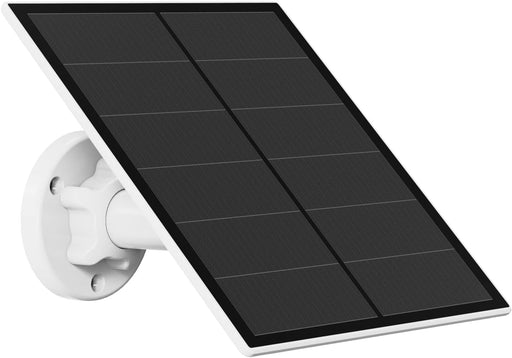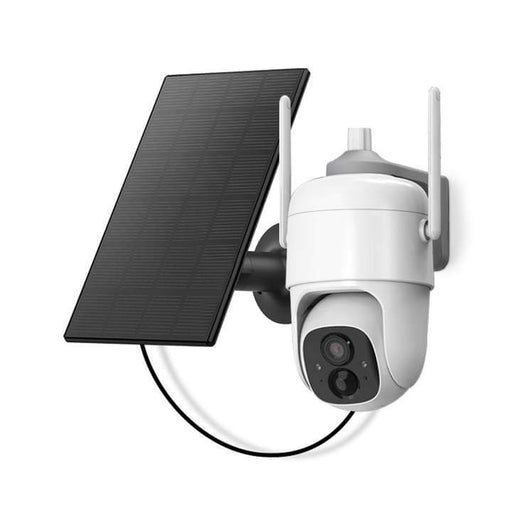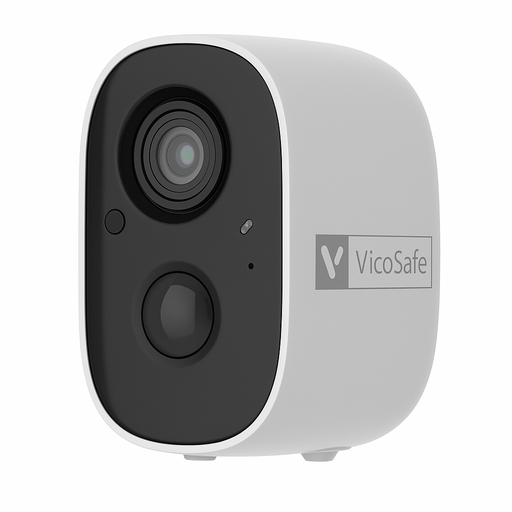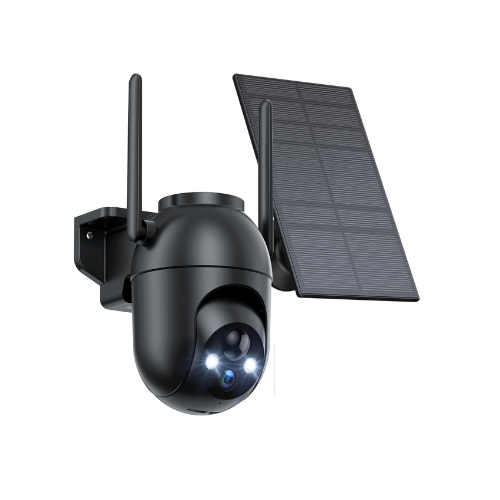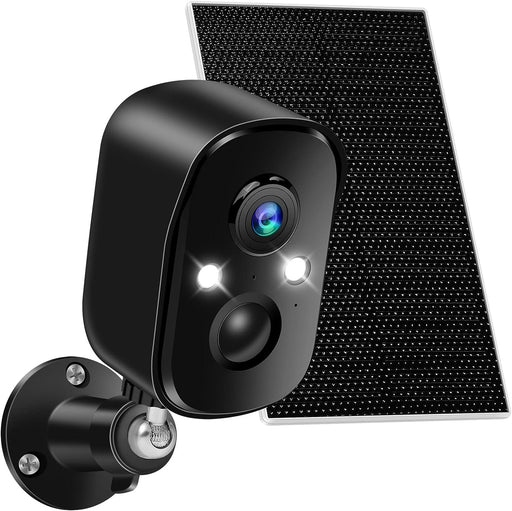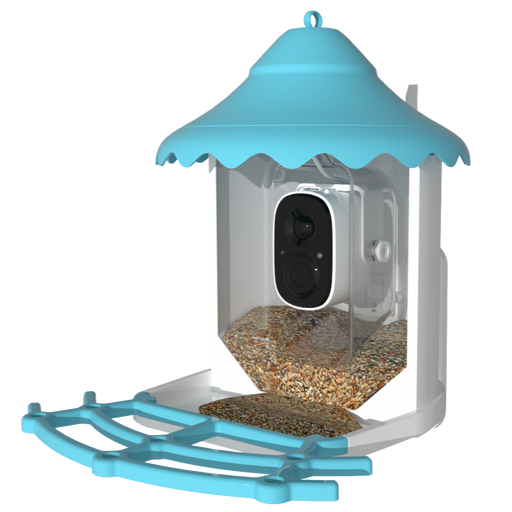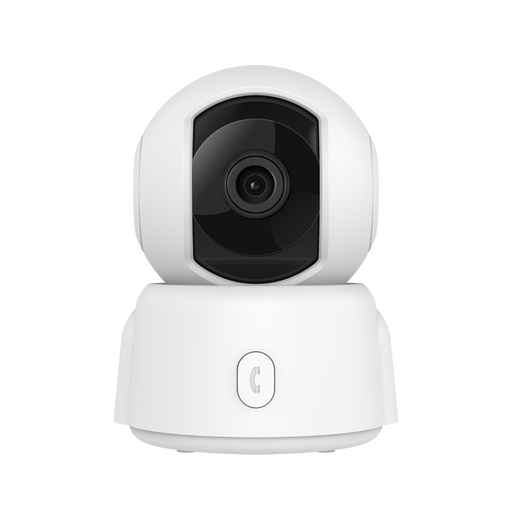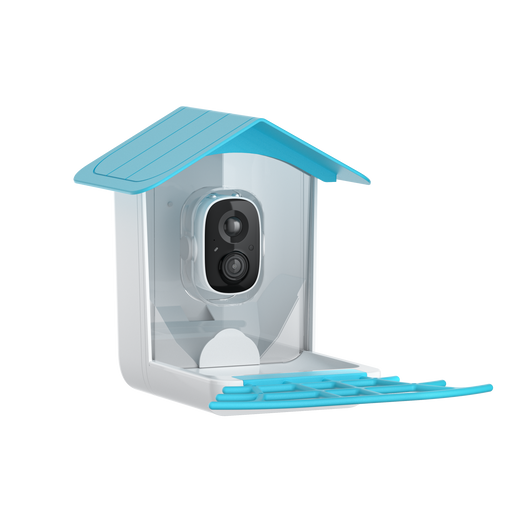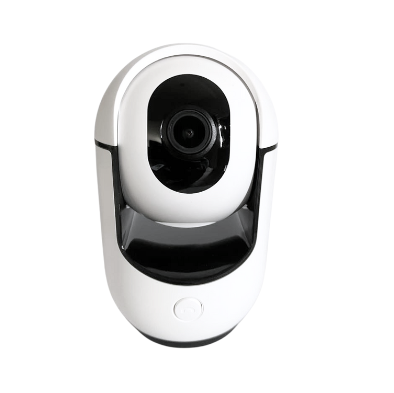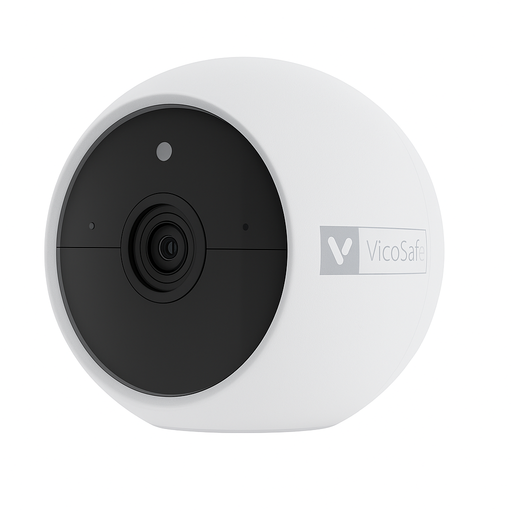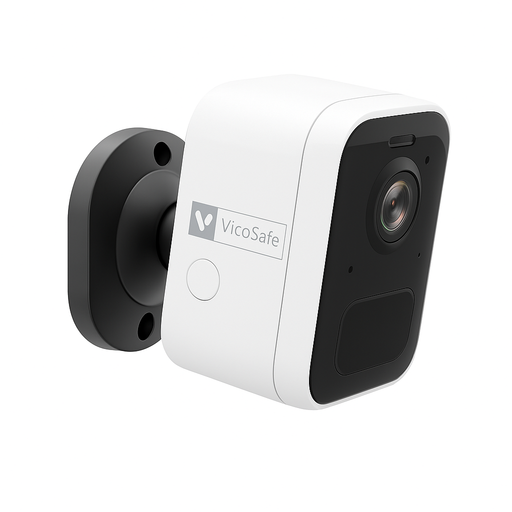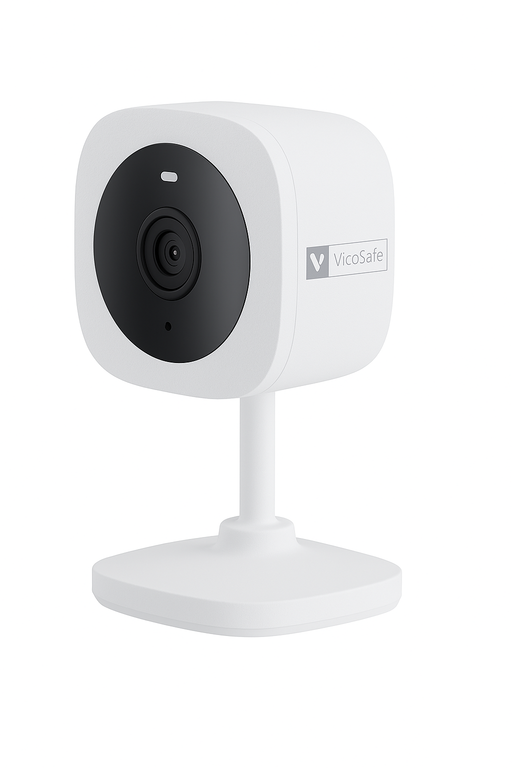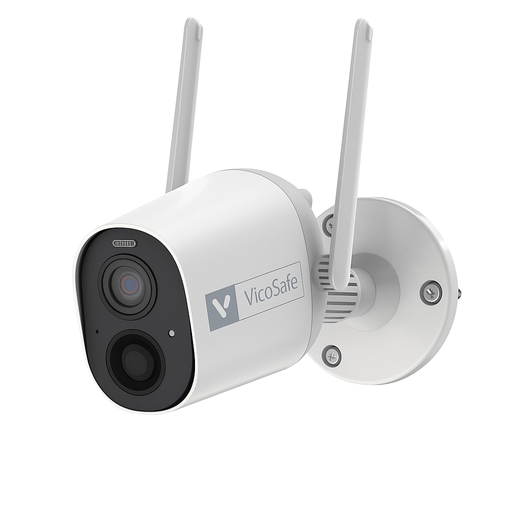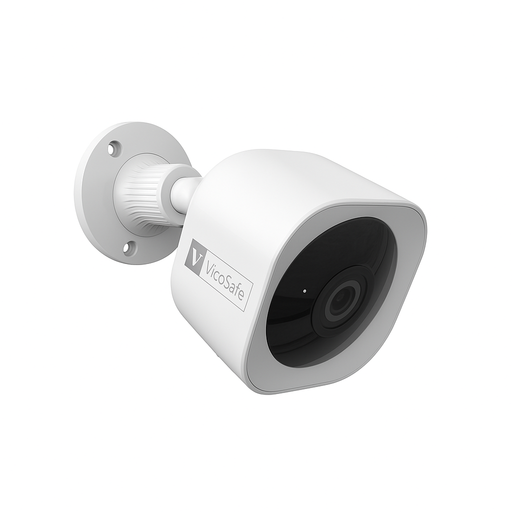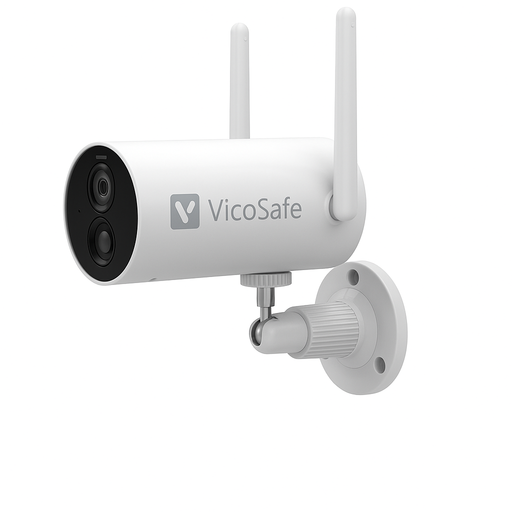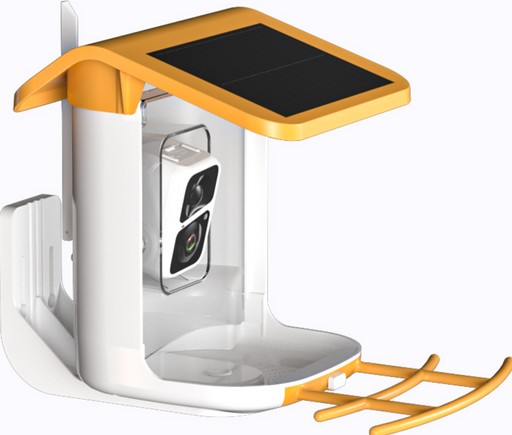
Top Features to Look for in a Security Camera
In today's world, security cameras have become an essential part of home and business security systems. With the rise of smart home technology, the market is flooded with various types of security cameras, each boasting different features. But how do you know which security camera is right for you? In this article, we’ll explore the top features to look for in a security camera to ensure you make an informed decision that meets your security needs.
1. High-Resolution Video Quality
When it comes to security cameras, video quality is one of the most critical factors. The higher the resolution, the clearer and more detailed the footage will be. Look for security cameras that offer at least 1080p resolution, but if you want even sharper images, opt for cameras with 4K resolution. High-resolution cameras are particularly useful for identifying faces, license plates, and other important details that could be crucial in the event of an incident.
2. Night Vision Capabilities
Criminals often strike under the cover of darkness, so having a security camera with excellent night vision is essential. Infrared (IR) night vision is a common feature in many security cameras, allowing them to capture clear footage even in complete darkness. Some advanced cameras also offer color night vision, which provides even more detailed footage. When selecting a security camera, consider the night vision range, which indicates how far the camera can see in low-light conditions.
3. Motion Detection
Motion detection is a must-have feature for any security camera. Cameras with this feature can detect movement within their field of view and automatically start recording. Some cameras also send instant alerts to your smartphone when motion is detected, allowing you to take immediate action. Advanced motion detection features can even differentiate between humans, animals, and objects, reducing the number of false alarms.
4. Wireless Connectivity
The convenience of wireless security cameras cannot be overstated. Wireless cameras are easy to install and can be placed virtually anywhere, without the need for complicated wiring. They connect to your home Wi-Fi network, allowing you to monitor your property remotely through a smartphone app. When choosing a wireless camera, consider the signal range and ensure it offers a stable connection.
5. Smart Home Integration
In today’s smart home era, having a security camera that integrates with your existing smart devices is a big plus. Many modern security cameras are compatible with popular smart home platforms like Amazon Alexa, Google Assistant, and Apple HomeKit. This integration allows you to control your camera using voice commands and view footage on compatible smart displays. For a seamless smart home experience, choose a security camera that easily integrates with your other smart devices.
6. Cloud Storage and Local Storage Options
Storing your security footage is another important consideration. Many security cameras offer cloud storage, where your footage is saved on a secure server and can be accessed from anywhere. However, cloud storage usually comes with a subscription fee. Alternatively, some cameras offer local storage options, such as a microSD card slot or a connected hard drive. Local storage eliminates monthly fees, but there’s a risk of losing footage if the camera is damaged or stolen. Some cameras offer both cloud and local storage options for added flexibility.
Keywords to include: security camera with cloud storage, local storage camera, microSD security camera, storage options
7. Weatherproof Design
If you’re installing a security camera outdoors, it needs to withstand various weather conditions. Look for cameras that are rated as weatherproof or waterproof, often indicated by an IP (Ingress Protection) rating. A camera with an IP65 or higher rating can endure rain, dust, and extreme temperatures, ensuring reliable performance year-round.
Keywords to include: weatherproof security camera, outdoor security camera, waterproof camera, IP65 camera
8. Two-Way Audio
Two-way audio is a feature that allows you to listen to and speak with someone through the camera. This feature is particularly useful for communicating with visitors, deterring intruders, or even talking to your pets. When choosing a camera with two-way audio, ensure it has clear sound quality and a reliable microphone and speaker system.
9. Wide Field of View
A security camera’s field of view (FOV) determines how much area it can cover. Cameras with a wide-angle lens offer a broader view, reducing the number of cameras needed to monitor your property. Look for cameras with at least a 120-degree FOV, but if you want to cover larger areas, opt for cameras with a 180-degree or even 360-degree FOV.
Conclusion
When shopping for a security camera, it’s essential to prioritize the features that best suit your specific needs. Whether you’re looking for high-resolution video, night vision, or smart home integration, understanding these key features will help you make an informed decision. By choosing the right security camera, you’ll enhance your home or business security, giving you peace of mind.
If you’re ready to find the perfect security camera for your needs, explore our wide selection at VicoSafe.com. Protect what matters most with the latest in security technology.
-
Original price $24.99Original price$24.99$24.99 - $24.99Current price $24.99
Solar Panel SP for Wifi Camera Outdoor Charger Type-C
Solar Panel SP for Wifi Camera Outdoor Compatibility Our solar panel is designed specifically for DC 5V rechargeable battery cameras with micro USB...
View full detailsOriginal price $24.99Original price$24.99$24.99 - $24.99Current price $24.99 -
Original price $79.99Original price$79.99$79.99 - $79.99Current price $79.99
Wireless Camera CQ1 - Solar panel
Outdoor Camera CQ1 Wire-Free Solar Camera – Black Sleek black design meets advanced security. Solar-powered wireless monitoring w...
View full detailsOriginal price $79.99Original price$79.99$79.99 - $79.99Current price $79.99 -
Original price $59.99Original price $59.99Original price $59.99Current price $49.99$49.99 - $49.99Current price $49.99
Wireless Camera CG6
Versatile Outdoor Camera Wireless Camera CG6 This versatile Outdoor Security Camera goes almost anywhere and lets y...
View full detailsOriginal price $59.99Original price $59.99Original price $59.99Current price $49.99$49.99 - $49.99Current price $49.99> Sale < -
Original price $64.99Original price $64.99Original price $64.99Current price $54.99$54.99 - $54.99Current price $54.99
Wireless Camera CG6X/CG8 Solar Panel | White
Solar Powered Security Wireless Camera CG8 with Solar Panel An exceptional wireless camera with an included solar p...
View full detailsOriginal price $64.99Original price $64.99Original price $64.99Current price $54.99$54.99 - $54.99Current price $54.99> Sale < -
Original price $39.99Original price $39.99Original price $39.99Current price $29.99$29.99 - $29.99Current price $29.99
Camera CA48: Home 360 rotating 2K WiFi | VicoHome
CA48 Smart WiFi Camera Advanced home monitoring with 2K HD resolution, 355° panoramic rotation, infrared night vision, and ...
View full detailsOriginal price $39.99Original price $39.99Original price $39.99Current price $29.99$29.99 - $29.99Current price $29.99Temporarily Out. -
Original price $69.99Original price$69.99$69.99 - $69.99Current price $69.99
Video Doorbell DB1: Secure Monitoring 2K, Wi-Fi, Night Vision | VicoHome
Essential Smart Doorbell Video Doorbell DB1 The essential smart doorbell with Full HD 1080p video, infrared night v...
View full detailsOriginal price $69.99Original price$69.99$69.99 - $69.99Current price $69.99 -
Original price $39.99Original price$39.99$39.99 - $39.99Current price $39.99
Camera LB: Light Bulb 360 WiFi | VicoHome
LB Light Bulb WiFi Camera Discreet indoor monitoring hidden in plain sight. 2K HD resolution, 355° rotation, motion trackin...
View full detailsOriginal price $39.99Original price$39.99$39.99 - $39.99Current price $39.99Temporarily Out. -
Original price $79.99Original price$79.99$79.99 - $79.99Current price $79.99
Wireless Camera CQ1 black - Solar panel
Outdoor Camera CQ1 Wire-Free Solar Camera – Black Sleek black design meets advanced security. Solar-powered wireless monitoring w...
View full detailsOriginal price $79.99Original price$79.99$79.99 - $79.99Current price $79.99 -
Original price $64.99Original price $64.99Original price $64.99Current price $54.99$54.99 - $54.99Current price $54.99
Wireless Camera CG6X/CG8 Solar Panel | Black
Solar Powered Security Wireless Camera CG8 with Solar Panel An exceptional wireless camera with an included solar p...
View full detailsOriginal price $64.99Original price $64.99Original price $64.99Current price $54.99$54.99 - $54.99Current price $54.99> Sale < -
Original price $59.99Original price $59.99Original price $59.99Current price $49.99$49.99 - $49.99Current price $49.99
Video Doorbell DB2: Secure Monitoring 2K, Wi-Fi, Night Vision | VicoHome
Advanced Smart Doorbell Video Doorbell DB2 Never miss a visitor, package, or unexpected guest again. Know who's at your door anytime – day or ni...
View full detailsOriginal price $59.99Original price $59.99Original price $59.99Current price $49.99$49.99 - $49.99Current price $49.99> Sale < -
Original price $119.99Original price$119.99$119.99 - $119.99Current price $119.99
Smart Bird Feeder N002 Camera | solar panel
Smart Bird Feeder Camera N002 Bird Feeder Camera An exceptional wireless camera with an included solar panel for en...
View full detailsOriginal price $119.99Original price$119.99$119.99 - $119.99Current price $119.99 -
Original price $39.99Original price $39.99Original price $39.99Current price $29.99$29.99 - $29.99Current price $29.99
Camera X11: Home 360 rotating 2K WiFi | VicoHome
X11 Smart WiFi Camera Your ultimate home security solution with 2K HD video, 360° coverage, AI motion tracking, and seamless app ...
View full detailsOriginal price $39.99Original price $39.99Original price $39.99Current price $29.99$29.99 - $29.99Current price $29.99Temporarily Out. -
Original price $69.99Original price$69.99$69.99 - $69.99Current price $69.99
Wireless Camera CQ1/X85
Revolutionary WiFi Camera Wireless Camera CQ1 Revolutionary product from our wireless WiFi camera lineup - Wire-fre...
View full detailsOriginal price $69.99Original price$69.99$69.99 - $69.99Current price $69.99 -
Original price $124.99Original price $124.99Original price $124.99Current price $109.99$109.99 - $109.99Current price $109.99
Smart Bird Feeder Camera G02 | solar panel
Solar Powered Bird Feeder Smart Bird Feeder Camera G02 Transform your garden into a bird sanctuary. This smart came...
View full detailsOriginal price $124.99Original price $124.99Original price $124.99Current price $109.99$109.99 - $109.99Current price $109.99> Sale < -
Original price $59.99Original price $59.99Original price $59.99Current price $49.99$49.99 - $49.99Current price $49.99
Wireless Camera CG6 | Black
Versatile Outdoor Camera Wireless Camera CG6 This versatile Outdoor Security Camera goes almost anywhere and lets y...
View full detailsOriginal price $59.99Original price $59.99Original price $59.99Current price $49.99$49.99 - $49.99Current price $49.99> Sale < -
Original price $29.99Original price$29.99$29.99 - $29.99Current price $29.99
Wired Camera PZL/CA42 | White
Home Use Camera with Rotating Field of View PZL Product Features: Sensor: 1/3" CMOS Field of View: 92° diagonal, 78° horizontal, 38° vertical Max...
View full detailsOriginal price $29.99Original price$29.99$29.99 - $29.99Current price $29.99 -
Original price $59.99Original price$59.99$59.99 - $59.99Current price $59.99
Wireless Camera CG9
Wireless WiFi Camera Model CG9 Product Features: Sensor: 1/2.8" CMOS Viewing Angle: 127° diagonally, 108° horizontally, 58° vertically Maxi...
View full detailsOriginal price $59.99Original price$59.99$59.99 - $59.99Current price $59.99 -
Original price $59.99Original price$59.99$59.99 - $59.99Current price $59.99
Wireless Camera BC1
Wireless Camera BC1 Introducing the BC1 model - an outstanding wireless camera that offers superior video quality and a long-lasting battery. Weath...
View full detailsOriginal price $59.99Original price$59.99$59.99 - $59.99Current price $59.99 -
Original price $29.99Original price$29.99$29.99 - $29.99Current price $29.99
Camera CB1: Home 360 rotating 2K WiFi wired | VicoHome
CB1 Smart WiFi Camera Modern home monitoring with sleek minimalist design, 2K HD resolution, 355° panoramic rotation, and se...
View full detailsOriginal price $29.99Original price$29.99$29.99 - $29.99Current price $29.99Temporarily Out. -
Original price $29.99Original price$29.99$29.99 - $29.99Current price $29.99
Wired camera Wifi CK1
CK1 Wired Camera: Security, 2K Monitoring, Easy Installation, Intelligent AI Features Introducing the Wired Camera CK1, an innovative camera design...
View full detailsOriginal price $29.99Original price$29.99$29.99 - $29.99Current price $29.99 -
Original price $64.99Original price$64.99$64.99 - $64.99Current price $64.99
Wireless Camera CG7
Wireless Camera CG7 Introducing the innovative wireless camera CG7 Model ST-G1, redefining the standards of home monitoring. With the latest 1/2.8-...
View full detailsOriginal price $64.99Original price$64.99$64.99 - $64.99Current price $64.99 -
Original price $24.99Original price$24.99$24.99 - $24.99Current price $24.99
Solar Panel SP for Wifi Camera Outdoor Charger Type USB-Micro
Solar Panel SP for Wifi Camera Outdoor Compatibility Our solar panel is designed specifically for DC 5V rechargeable battery cameras with micro USB...
View full detailsOriginal price $24.99Original price$24.99$24.99 - $24.99Current price $24.99 -
Original price $59.99Original price$59.99$59.99 - $59.99Current price $59.99
Wireless Camera X71
Wireless Camera X71 – The Smart Choice for Home Security Introducing the VicoHome X71 Smart WiFi Camera, the ultimate solution for modern home secu...
View full detailsOriginal price $59.99Original price$59.99$59.99 - $59.99Current price $59.99 -
Original price $64.99Original price$64.99$64.99 - $64.99Current price $64.99
Wireless Camera X81
Wireless Camera X81 Experience smarter home security with our advanced WiFi camera. Featuring AI-powered Cloud technology, it delivers intelligent ...
View full detailsOriginal price $64.99Original price$64.99$64.99 - $64.99Current price $64.99 -
Original price $119.99Original price$119.99$119.99 - $119.99Current price $119.99
Smart Bird Feeder Camera G03 | solar panel
AI-Enabled Wildlife Feeder Smart Bird Feeder Camera G03 Transform your garden into a bird sanctuary. This smart cam...
View full detailsOriginal price $119.99Original price$119.99$119.99 - $119.99Current price $119.99Temporarily Out.

